Category: Technology Access and Age-Related Digital Divide Economics
-
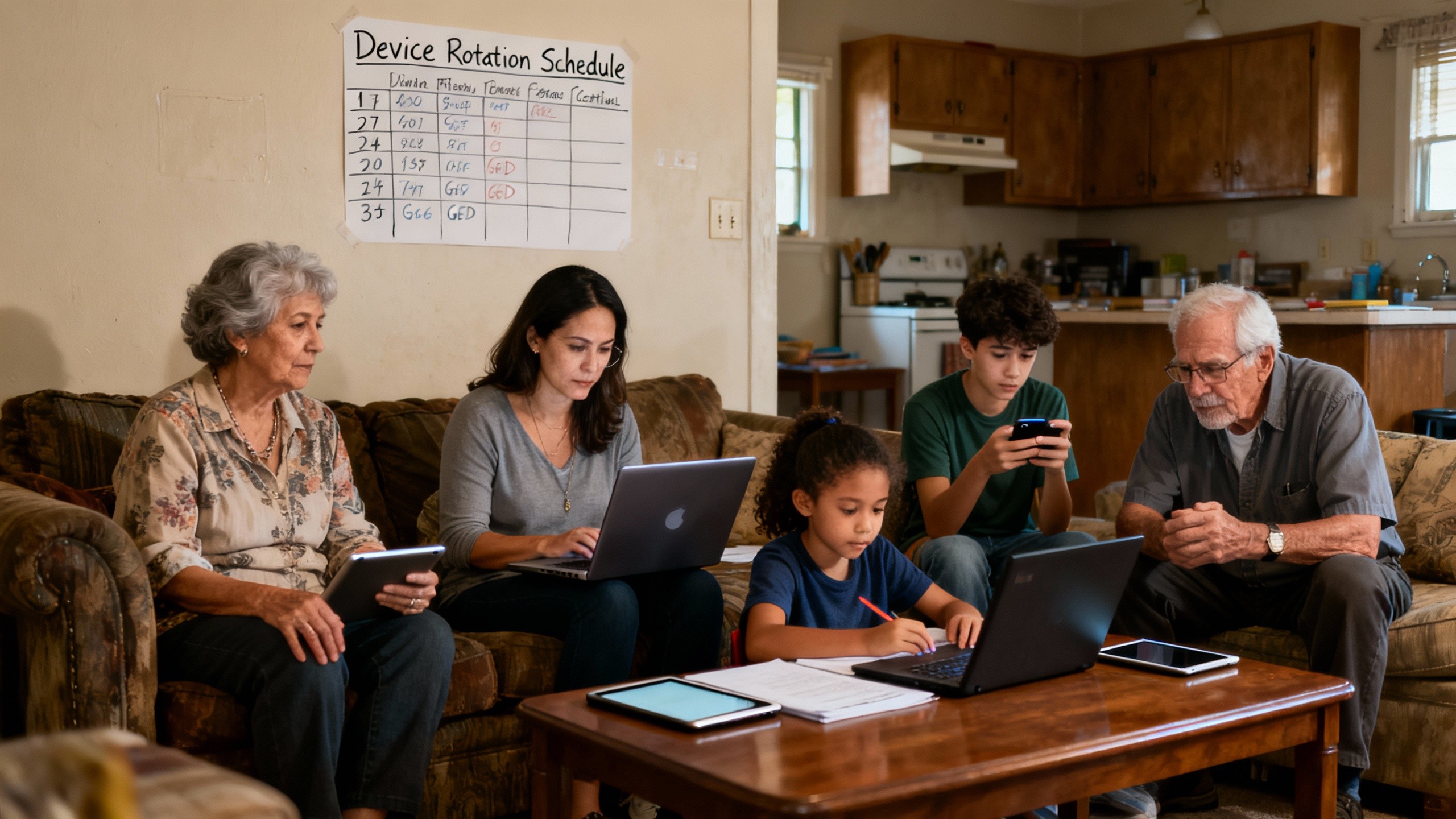
The family device sharing dilemma: How intergenerational households navigate technology costs when multiple ages need online learning access
In millions of households worldwide, a complex daily negotiation unfolds as grandparents pursuing lifelong learning, parents advancing careers through online courses, teenagers attending virtual schools, and young children accessing educational games all compete for limited devices and bandwidth, creating stress fractures in family harmony while exposing the harsh economics of digital inequality. This comprehensive exploration…
-
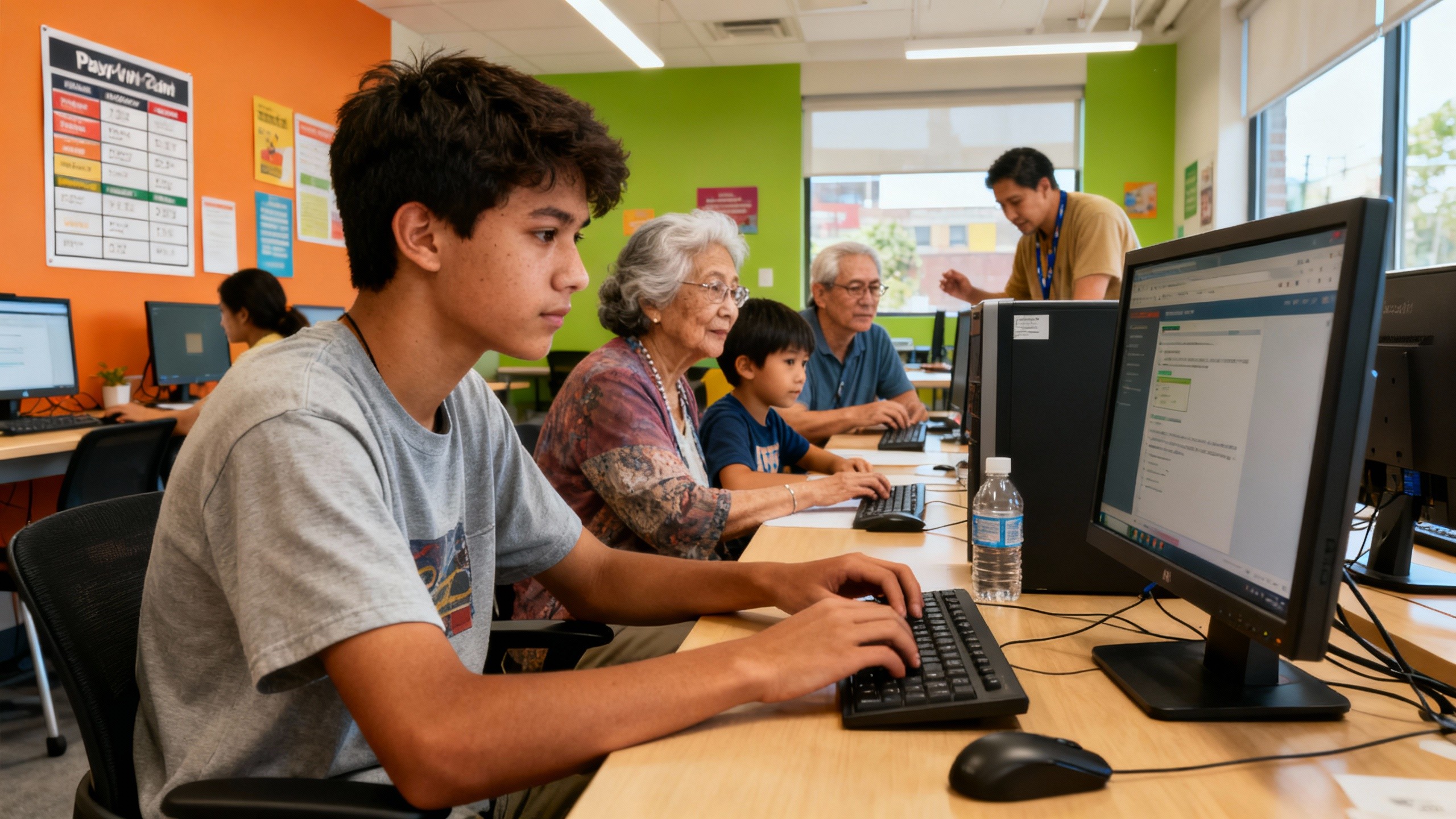
Community technology centers as age-equity spaces: Shared-cost models that eliminate age and income barriers simultaneously
The transformation of community technology centers from simple computer labs into vibrant intergenerational hubs represents one of the most promising solutions to digital inequality, where innovative shared-cost models create sustainable spaces that serve toddlers learning their first digital skills alongside seniors mastering video calls, while unemployed adults gain job skills next to teenagers coding their…
-
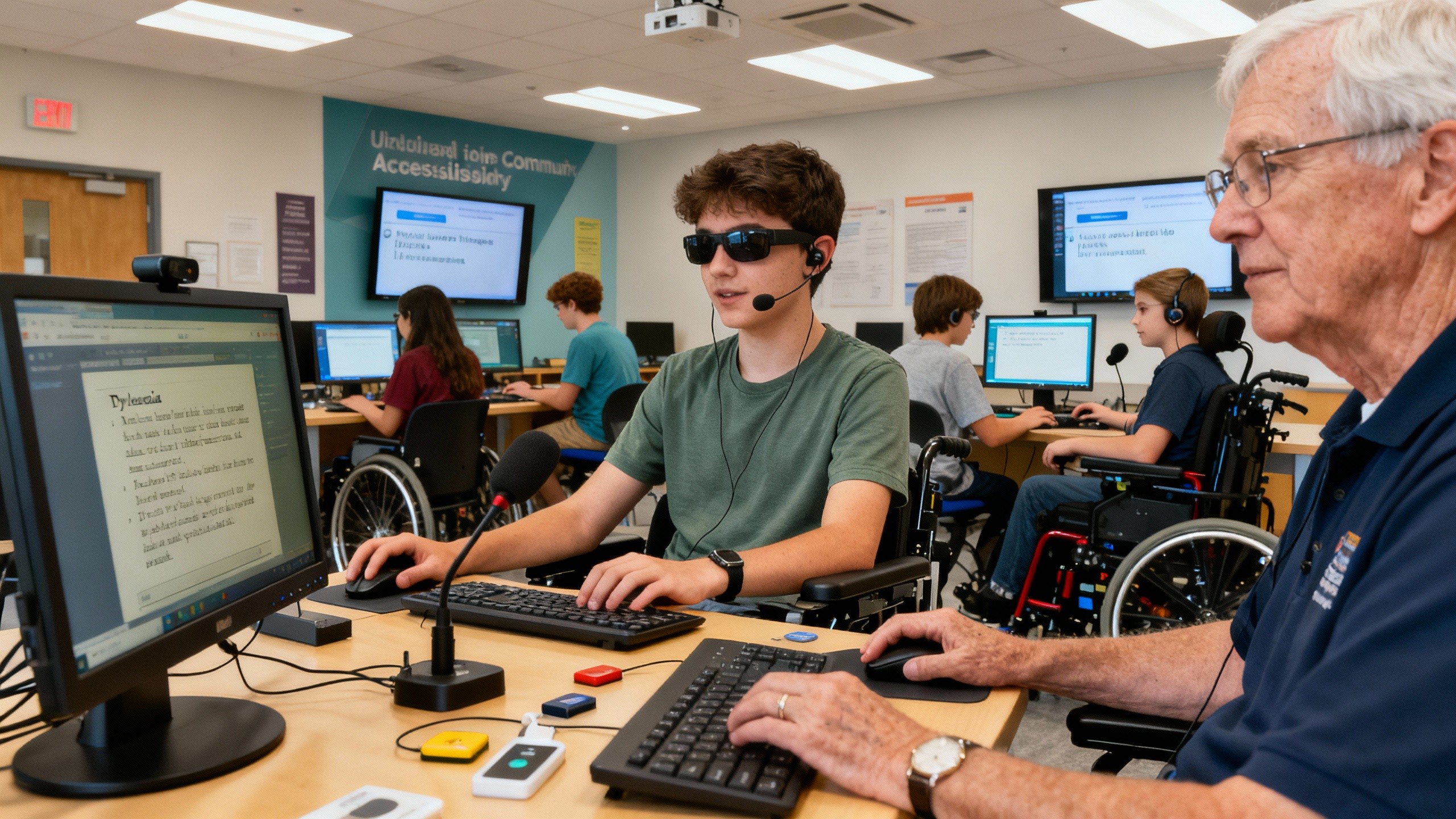
Assistive technology across ages: Affordable accessibility solutions that serve both aging learners and young people with disabilities
The convergence of accessibility needs across generations reveals a profound truth: the same assistive technologies that empower young people with disabilities to access education also enable aging learners to continue their intellectual journeys, creating unprecedented opportunities for cost-effective, universal solutions that serve multiple populations simultaneously. This comprehensive exploration examines how smart investments in assistive technology…
-
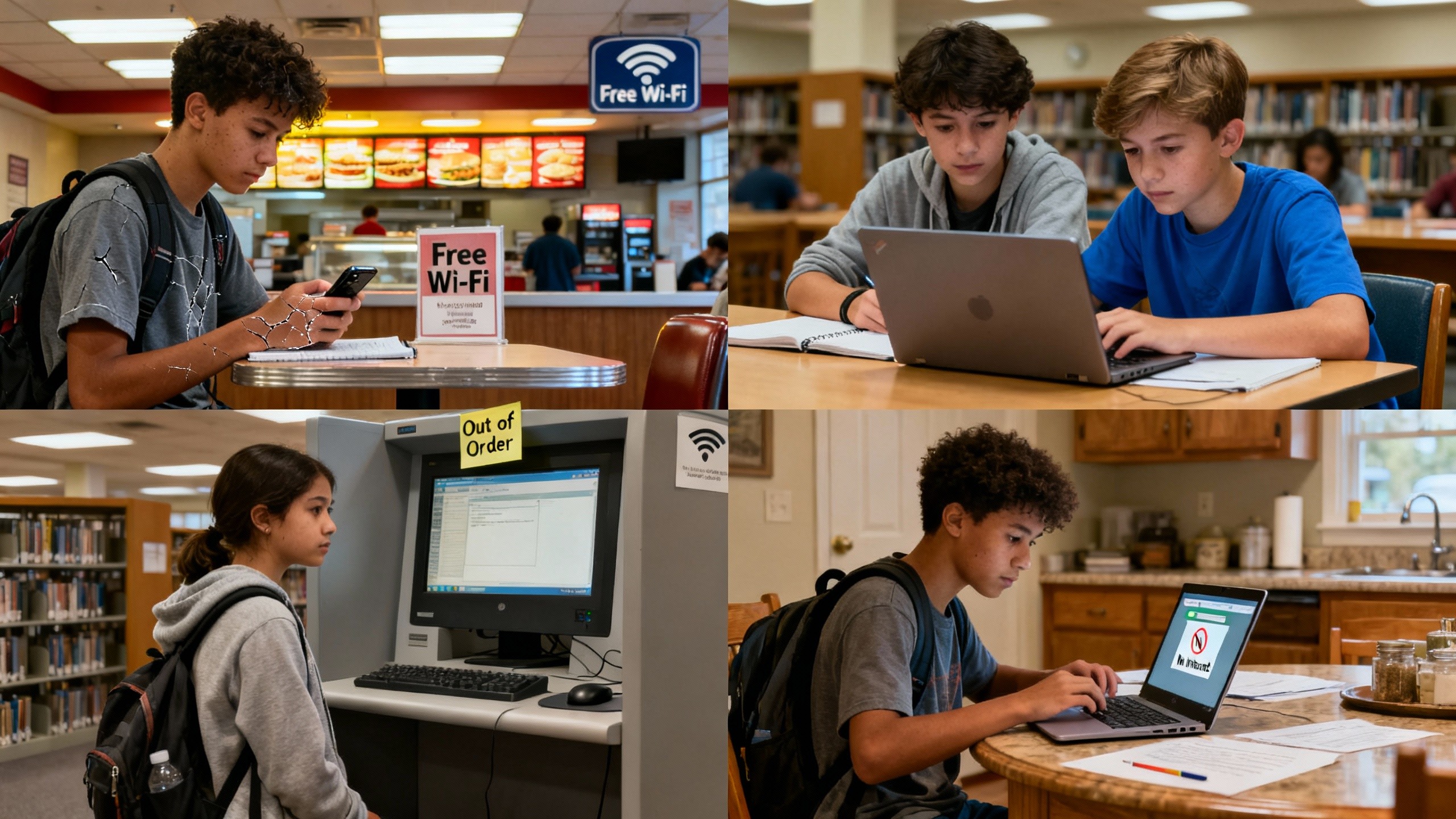
Youth technology poverty: How assumptions about young people’s digital access hide serious economic barriers to online education
The pervasive myth of the “digital native” generation conceals a harsh reality where 15.3 million American students lack adequate technology access for effective online learning, creating educational disparities that compound generational poverty. This comprehensive analysis exposes how societal assumptions about young people’s inherent technological capabilities mask devastating economic barriers that prevent millions from accessing quality…
-
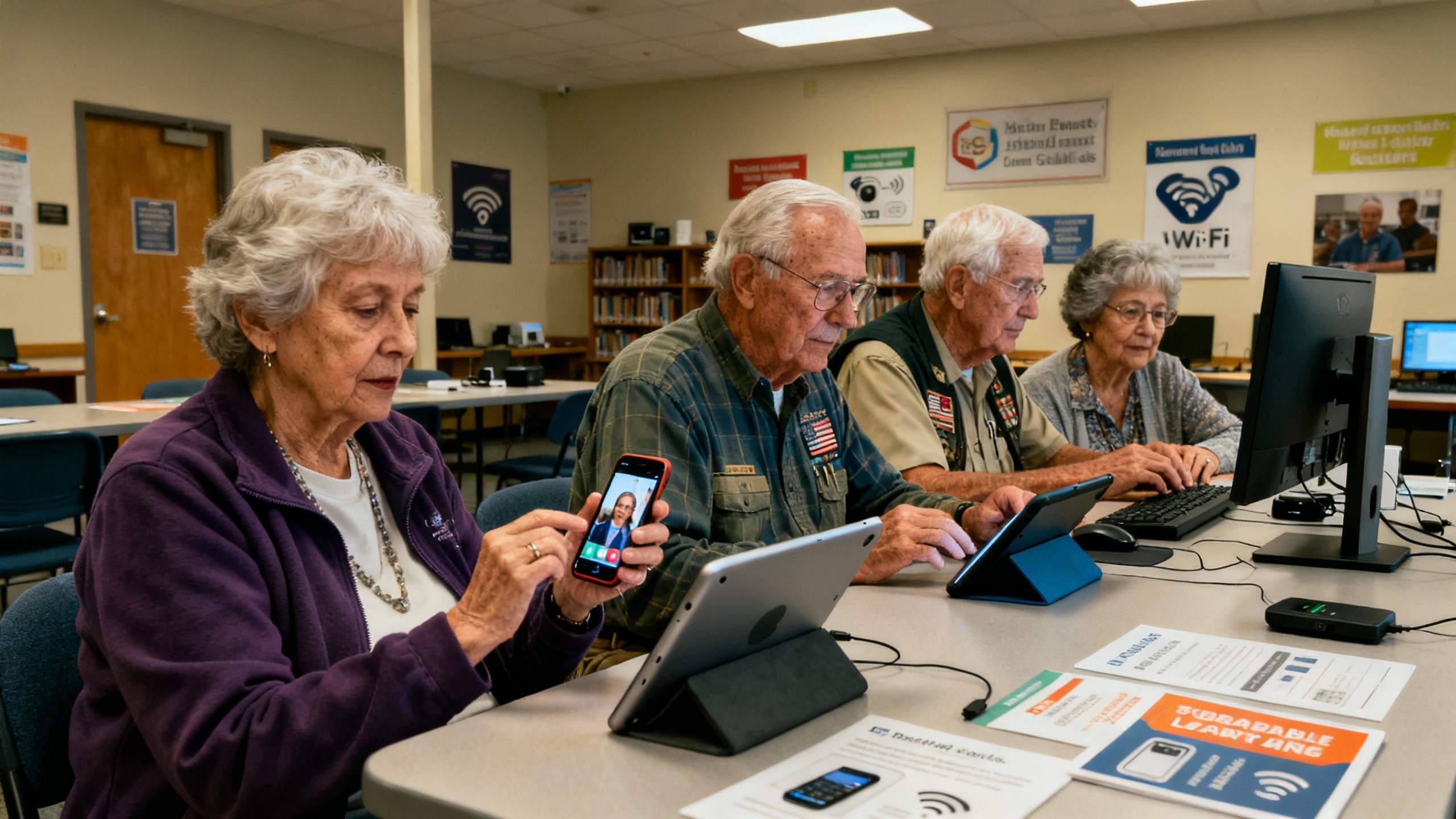
The gray digital divide: Cost-effective solutions for bringing older adults online without expensive technology infrastructure
The digital divide affecting older adults represents one of society’s most pressing yet solvable challenges, with 42% of adults over 65 lacking basic internet access despite affordable solutions existing that require minimal infrastructure investment. This comprehensive analysis explores practical, budget-conscious strategies that successfully connect seniors to the digital world while maintaining dignity, independence, and financial…